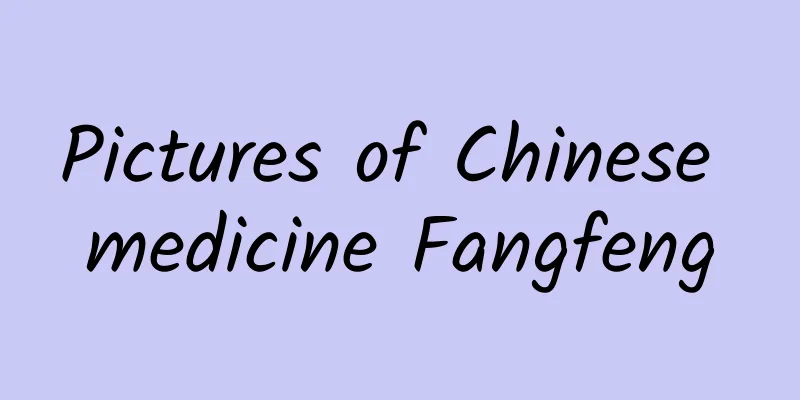The efficacy and function of pot grass

|
Traditional Chinese medicine is very helpful in treating certain diseases, so you can feel free when choosing herbs. Herba Lycopodii is a medicinal herb that is not unfamiliar to us. Do you know its effects and functions? Let's take a look. [Other names] Yangtian jar, high-foot red jar, line chicken feet, big golden bell, male pomegranate, inverted water lotus, broad-leaved golden brocade fragrance [Source] Medicinal material source: The branches and leaves of Chaotianguan, a plant of the Melastomataceae family. 【Original form】 Shrub, 0.3-1.2m high. The stem is quadrangular or rarely hexagonal, covered with appressed or ascending strigose hairs, leaves opposite or sometimes in whorls of 3; petiole 0.5-1cm long, densely appressed strigose hairs; leaf blade is hard papery, ovate to ovate-lanceolate, 5.5-11.5cm long, 2.3-3cm wide, apex acuminate, base obtuse or rounded, entire, ciliate, both surfaces covered with strigose hairs, fine soft hairs and transparent glandular dots; basal veins 5. The sparse cymes form a panicle, terminal; the calyx is about 2.3 cm long, long altar-shaped, with prickly hand-stalked stellate hairs and fine hairs on the outside, 4 lobes, long triangular or ovate-triangular, about 1.1 cm long; the petals are 4, dark red to purple, ovate, about 2 cm long; the stamens are 8, the anthers have long beaks, the base of the connective is slightly swollen, and there are 2 prickles at the end; the ovary is semi-inferior, 4-chambered, with a circle of short bristles at the apex, and the upper half is sparsely fine hairs. The capsule is oblong and enclosed by a persistent calyx, which is long and urn-shaped, slightly constricted in the middle, 1.4-2cm long, and covered with spiny, stalked, stellate hairs. Flowering and fruiting period is July to September. It grows on hillsides, valleys, water banks, roadsides, sparse woods or bushes at an altitude of 250-800m. Distributed in the south of the Yangtze River Basin and in Taiwan, Guangxi, Guizhou and other places. [Habitat distribution] Ecological environment: Growing on hillsides, valleys, watersides, roadsides, sparse forests or bushes at an altitude of 250-800m [Properties] Property identification: The stem is quadrangular, covered with coarse hairs, brown on the surface, and 1-6mm in diameter. Leaves are opposite; elliptic-lanceolate, 5-10cm long, 2-4cm wide, acuminate at apex, entire, obtuse or nearly cordate at base, dark brown, and coarsely hairy on both sides. Inflorescence terminal, or compressed into corymb; bracteoles ovate; petals 4, light purple. 【Nature and flavor】 Bitter; sweet; neutral 【Functions and indications】 Clears away heat and dampness; stops bleeding and regulates menstruation. Mainly used for damp-heat diarrhea; painful stranguria; chronic cough; fatigue cough; hemoptysis; irregular menstruation; leucorrhea [Usage and Dosage] For oral use: decocted in water, 9-15g. 【Excerpt】 Chinese Materia Medica I believe that friends who were not very clear about pot grass at the beginning should now have mastered the relevant knowledge about pot grass. I hope this article can be helpful to you. |
<<: The efficacy and function of soybean oil
>>: The efficacy and function of blister beetles
Recommend
The efficacy and function of syrup
After thousands of years of sedimentation and acc...
The efficacy and function of banana butterfly
Traditional Chinese medicine is very helpful in t...
12 Best-selling Laundry Detergents Review: Here Comes the Nemesis of Oil, Milk, Blood and Sweat Stains
In order to help you choose the best laundry dete...
Ministry of Industry and Information Technology: China's manufacturing value added will account for nearly 30% of the world's total in 2022, and the scale of its manufacturing industry has ranked first in the world for 13 consecutive years
Data released by the Ministry of Industry and Inf...
Extremely heavy rainfall in North China and Huanghuai continues! What else should we pay attention to after the flood disaster?
Affected by the remnant circulation of Typhoon Du...
The efficacy and function of chestnut rush
Juncus effusus is a very common Chinese medicine ...
Inventory of four new AI fraud methods, experts: Use the simplest method to prevent being deceived
Copyrighted images from the gallery, unauthorized...
Can running a marathon cause sudden cardiac death? Five things to keep in mind when running long distances
The 2023 marathon events are coming, and the ones...
The efficacy and function of wine
Traditional Chinese medicine is very effective in...
What are the medicinal values of the green willow tree?
The leaves of Cyclocarya paliurus are a plant tha...
The efficacy and function of Thirteen-year Flower
Traditional Chinese medicine has a history of tho...
The efficacy and function of Pseudotumorhynchus pubescens
Pseudotoma fern is a very common Chinese medicine...
In the rainy season, cities turn on the "sea-viewing mode"? "Sponge" makes cities "water-absorbent"!
In recent years, many cities have turned on the s...
Is the Chinese medicine motherwort an anti-inflammatory drug?
Motherwort has a strong effect of promoting blood...
State Post Bureau: On Double Eleven 2024, national postal express companies handled a total of 701 million express parcels, which is 151% of the daily business volume.
According to data from the State Post Bureau, on ...









